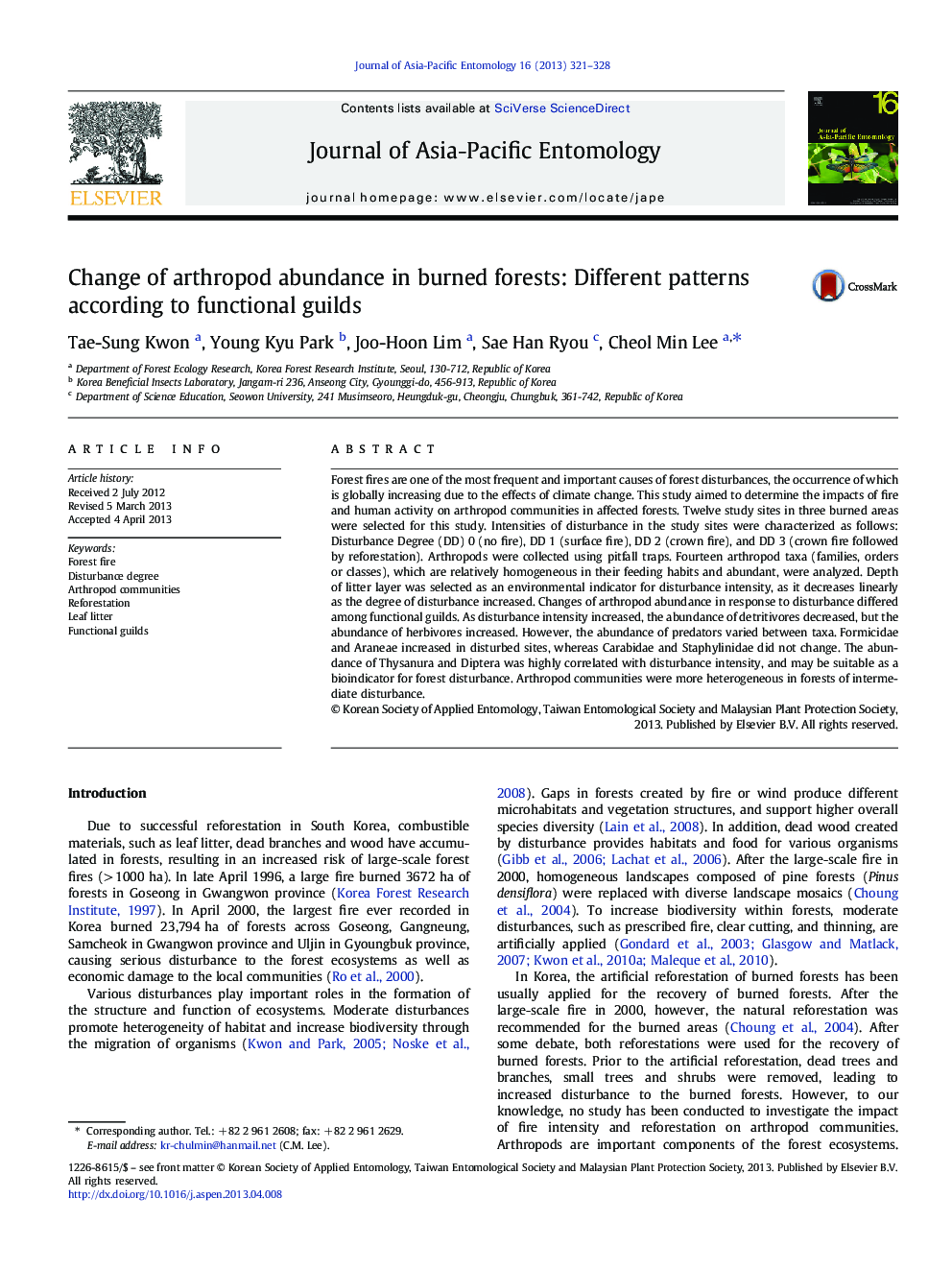| کد مقاله | کد نشریه | سال انتشار | مقاله انگلیسی | نسخه تمام متن |
|---|---|---|---|---|
| 6380470 | 1323593 | 2013 | 8 صفحه PDF | دانلود رایگان |
- This study aimed to find impacts of fire and human activity on arthropods.
- Change of arthropods in response to disturbance differed among functional guilds.
- As disturbance intensity increased, abundance of detritivores decreased.
- However, herbivores increased.
- Arthropods were more heterogeneous in forests of intermediate disturbance.
Forest fires are one of the most frequent and important causes of forest disturbances, the occurrence of which is globally increasing due to the effects of climate change. This study aimed to determine the impacts of fire and human activity on arthropod communities in affected forests. Twelve study sites in three burned areas were selected for this study. Intensities of disturbance in the study sites were characterized as follows: Disturbance Degree (DD) 0 (no fire), DD 1 (surface fire), DD 2 (crown fire), and DD 3 (crown fire followed by reforestation). Arthropods were collected using pitfall traps. Fourteen arthropod taxa (families, orders or classes), which are relatively homogeneous in their feeding habits and abundant, were analyzed. Depth of litter layer was selected as an environmental indicator for disturbance intensity, as it decreases linearly as the degree of disturbance increased. Changes of arthropod abundance in response to disturbance differed among functional guilds. As disturbance intensity increased, the abundance of detritivores decreased, but the abundance of herbivores increased. However, the abundance of predators varied between taxa. Formicidae and Araneae increased in disturbed sites, whereas Carabidae and Staphylinidae did not change. The abundance of Thysanura and Diptera was highly correlated with disturbance intensity, and may be suitable as a bioindicator for forest disturbance. Arthropod communities were more heterogeneous in forests of intermediate disturbance.
Journal: Journal of Asia-Pacific Entomology - Volume 16, Issue 3, September 2013, Pages 321-328
